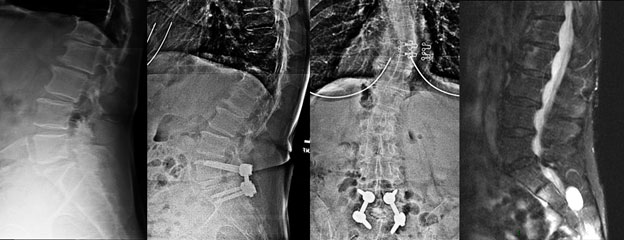Spinal Stenosis
The spinal cord is a very delicate structure that is essential to our basic functions. The spinal cord, travelling through the spinal canal, carries neurological signals that allow the limbs to move and feel sensations. When the spinal cord and/or spinal nerves are compressed as with spinal stenosis pain, weakness, tingling, and numbness often occur. Spinal stenosis is a common condition that interferes with the function of the spinal cord.
Symptoms of spinal stenosis
In spinal stenosis, the bones of the spine (vertebrae) and/or nearby tissue protrude into the spinal canal or squeeze the nerves as they exit the spine. This stenosis, or narrowing, may occur in just one vertebral bone or several. Stenosis can interfere with muscle control or cause weakness. Some severe cases of spinal stenosis can even cause paralysis, especially if the condition occurs in the neck. It also causes difficulty walking or leads to a decrease in how far the individual can walk.
Spinal stenosis almost always causes pain, even if it has not yet caused problems in the limbs.
Causes of spinal stenosis
Spinal stenosis can be caused by a number of things. The most common cause is degeneration of spinal segments which results in bulging discs, overgrown and arthritic joints in the back of the spine, and infolding of ligament (ligamentum flavum) into the spinal canal which constricts the spinal cord and nerve roots. Trauma can also lead to bone spurs, where irregular pieces of bone jut out, possibly into the spinal cord or soft tissue around the spine. Some individuals are born with a small spinal canal (congenital stenosis) and are more prone to symptoms of spinal stenosis as their spine ages.
Treatment for spinal stenosis
Short-term treatment for spinal stenosis usually includes non-steroidal antiinflammatory medication, such as ibuprofen, acetaminophen, or prescription painkillers (when severe, and usually only for a short time).
Exercise and physical therapy can help strengthen the muscle around the spine, lending support to the vertebrae and may improve walking endurance but often the benefits are minimal. Weight loss has been shown to lessen the pressure put on the spine and help treat many of the underlying conditions that can cause stenosis. Epidural steroid injections may provide some relief and help improve walking.
Some cases of spinal stenosis may warrant surgery. A surgeon will remove the offending parts of the bone, ligament, and disc. This is called a laminectomy and decompression. Not uncommonly, a spinal fusion is required which is usually performed with rods and screws and bone graft or bone protein substitute, and often with a metallic (titanium) spacer cage especially in the setting of spondylolisthesis or a forward slip of one vertebrae on another.

